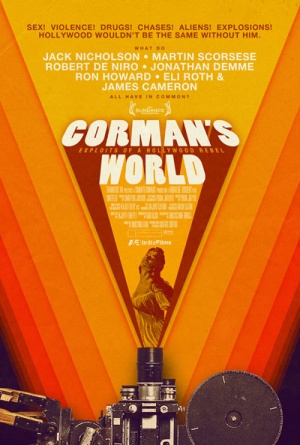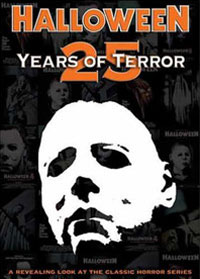My Flesh and Blood

This film should seriously be a required viewing for everyone who wishes to adopt a child, or has a child with special needs. Though this belief seems to be shared among those who've seen it, I'd even recommend that children of all ages and backgrounds see it as well, especially those with only one parent. I say this because Karsh's directorial debut is able to show us the experience of adopting a child from both the parent's side, as well as the child's. The Tom family case is obviously unique because of the number of children and the range of their disabilities, but the hardships and joys of family life as a whole are universal. Children of single-parent homes can view this film and be given an example of what obstacles their parent must face, both for them and in terms of their own needs.
Susan Tom is a divorced single mother who, while raising her biological children with her former husband, began adopting children from all over the world. In total, her adopted brood tops off at 11. More mind-blowing than the fact that she is raising and caring for this many children alone is the fact that they all have mental and/or physical disabilities. Without a nurse or much help from foundations and social workers, she and her oldest daughters help maintain the house.
Continue ReadingDancing Outlaw

Dancing Outlaw is the first of two films by director Jacob Young that follow the comical and sometimes endearing daily rituals of Jesco White—a young man with a few different personalities who has followed his father’s footsteps in attempting to become the greatest living mountain dancer in the Appalachians. He lives in Boone County, West Virginia—a place where everyone seems to have either gone mad or suffers from some kind of gentile and permanent cabin fever.
His wife Norma Jean describes him in by far the most amusing and unflinching way, claiming that he is the most beautiful person that she’s ever met, but also the Devil himself. Through fluid interviews, she sort of forewarns the audience of Jesco’s three personalities: there’s Jesse, the son of his father who has a healthy beard and enjoys digging into his hillbilly roots and growing into a stronger tap dancer; Jesco, the man who wears grungy metal clothing, talks simple, and tells stories of sniffing glue and gasoline, among other things; and finally, there’s Elvis—Jesco’s personality at home, where his entire house is literally filled with an overwhelming amount of Elvis memorabilia. Aside from his home being stuffed with everything with “The King’s” face on it, he also slicks back his hair, wears fancy clothes, shaves his beard, sculpts his brows, and records himself singing along to Elvis records in his bedroom.
Continue ReadingInside Job

"A guerrilla war is an intimate affair, fought not merely with weapons but fought in the minds of the men in the villages and in the hills, fought by the spirit and policy of those who run the local government."
--W.W. Rostow, address to the first graduating class at the U.S. Army Warfare School, Fort Bragg, June 1961 This documentary should be seen by everyone. In my opinion, it is one of the best documentaries to expose the roots behind the global economic crisis of 2008. It should be seen, analyzed, and discussed by as many people as possible. While I don’t agree with some of the conclusions made in the film—for example, minimizing the structural crisis inherent within capitalism while overemphasizing the lack of government financial regulations as a major source of the crisis—it convincingly demonstrates the real-life horror when the Milton Friedmans of the world take over: socialism for the rich, free enterprise for the rest. One only needs to look at Wisconsin right now to see this at work. Having won an Oscar for Best Documentary this year, Charles Ferguson’s film builds and yet departs from previous documentaries on the topic: Casino Jack and the United States of Money (directed by Alex Gibney, 2010) and Collapse (directed by Chris Smith, 2010). There is so much to say about Inside Job. However, for me, the most interesting part of the film is the section where Ferguson challenges some of the professors involved in the “inside job” that created the global financial meltdown at a cost over $20 trillion, resulted in millions losing their jobs, homes, etc. He interviews people like Professor Frederic Mishkin at Columbia Business School, and its Dean, Glenn Hubbard; Martin Feldstein, a Professor of Economics at Harvard University; and many more. (Larry Summers and Laura Tyson both declined t...
Continue ReadingBilly the Kid

"I know I’m unique. I don’t let it go to my head, though. I’m just someone who was born different than others. I’m not black, not white, not foreign. I’m just different in the mind."
Meet Billy Price. Not your average 15 year-old high school-student. Everyone knows Billy, but no one really knows him. Billy is the guy that sits in the cafeteria by himself. He’s the one that looks a little bit funny. He talks funny. Billy has dreams of becoming the Terminator or even Gene Simmons. Most would consider Billy to be overly sensitive or even a bit socially inept. Personally, I think he’s just misunderstood.
Continue ReadingCorman's World: Exploits of a Hollywood Rebel
 Even if you’re a casual film fan, you must have a general knowledge of who Roger Corman is and how important he’s been to the movie industry. You need look no further than the impressive roaster of names that speak about the prolific filmmaker in the documentary Corman’s World: Exploits Of A Hollywood Rebel. Jack Nicholson. Peter Fonda. Martin Scorsese. Peter Bogdanovich. Joe Dante. Ron Howard. Robert DeNiro. Bruce Dern. Dick Miller. William Shatner. And so on and so forth. Corman is responsible for helping to launch the careers of every one of those names I mentioned above and then some! So it’s somewhat of a surprise that a documentary of this type honoring the man and his large body of work has taken this long to come into existence.
Even if you’re a casual film fan, you must have a general knowledge of who Roger Corman is and how important he’s been to the movie industry. You need look no further than the impressive roaster of names that speak about the prolific filmmaker in the documentary Corman’s World: Exploits Of A Hollywood Rebel. Jack Nicholson. Peter Fonda. Martin Scorsese. Peter Bogdanovich. Joe Dante. Ron Howard. Robert DeNiro. Bruce Dern. Dick Miller. William Shatner. And so on and so forth. Corman is responsible for helping to launch the careers of every one of those names I mentioned above and then some! So it’s somewhat of a surprise that a documentary of this type honoring the man and his large body of work has taken this long to come into existence.
Not that Corman hasn’t gotten due credit and praise in the form of supplemental material before. Over the course of the last year, Shout! Factory obtained the license for dozens of his famous films and has been putting out great special edition DVD’s and Blu-Ray’s with extensive retrospective documentaries covering the making of each of those individual movies. There was also the fantastic documentary Machete Maidens Unleashed released last year from filmmaker Mark Hartley (who also did Not Quite Hollywood: The Wild, Untold Story of Ozploitation) which had a large segment talking about the low-budget “women in cages” movies that Corman produced in the Philippines, which also launched the acting career of Pam Grier. But as much as I thought I knew about Corman from the above mentioned sources, there was still plenty I learned from Corman’s World.
Fetishes

Nick Broomfield is a London-born director known for his minimalist approach with various subjects. His style is similar to the cinéma vérité techniques that many English filmmakers have adopted, allowing the eccentric or sometimes dangerous lifestyles of his subjects to overshadow any techniques used. His most popular works include Kurt & Courtney, Biggie and Tupac, and Aileen: Life and Death of a Serial Killer.
With Fetishes, Broomfield travels to Manhattan in order to interview and film the women and clients of Pandora's Box—an upscale S & M parlor of pleasure and bondage for those wishing to be dominated by a mistress. The documentary is separated into eight chapters: slaves, mistresses, rubber fetish, wrestling fetish, corporal punishment, masochism, infantilism, and socio-political fetishes.
Continue ReadingMan on Wire

“If I die, what a beautiful death; to die in the exercise of your passion.” - Philippe Petit
In his youth, Philippe Petit was drawn to climbing, fencing, and riding a unicycle. Balance was a gift, and motivation was endless. When he was 17, while waiting to see a dentist, he came across an article in the paper about two structures that were to be built in New York. The World Trade Center was to be the largest man-made structure, and within him developed a dream to conquer such a building in his own poetic way. Learning to walk a tightrope and gather close friends to help him reach his future goals, Petit set out to train, plan, and discipline himself to walk across a building that was yet to exist.
Continue ReadingHalloween: 25 Years Of Terror
 It’s been nearly 10 years since the Halloween Returns To Haddonfield 25th anniversary convention celebrating the release of John Carpenter’s now legendary film took place in Pasadena, California, and I’m sure at the time the organizers couldn’t have possibly predicted that the event would be the impetus for the documentary Halloween: 25 Years Or Terror, nor that that documentary would kick start and pave the way for similar retrospective films on the making-of horror franchise classics. Feature length retrospective documentaries were not anything new at the time of Halloween: 25 Years Of Terror’s release. Filmmaker Laurent Bouzereau was already producing some of the best making-of docs for DVD and Laserdisc releases of famous titles such as Jaws and Psycho; but the Halloween doc was the first to offer a feature length retrospective packaged completely on its own as the disc’s main feature with hours of bonus materials for the die-hard Halloween fans to soak up afterwards. Because of its success, we got a string of other horror documentary releases such as His Name Was Jason, The Psycho Legacy, Never Sleep Again and even More Brains!, a documentary focusing primarily on the first Return Of The Living Dead film! But it’s fascinating to go back and revisit where this particular sub-genre all began, which was with Halloween: 25 Years Of Terror.
It’s been nearly 10 years since the Halloween Returns To Haddonfield 25th anniversary convention celebrating the release of John Carpenter’s now legendary film took place in Pasadena, California, and I’m sure at the time the organizers couldn’t have possibly predicted that the event would be the impetus for the documentary Halloween: 25 Years Or Terror, nor that that documentary would kick start and pave the way for similar retrospective films on the making-of horror franchise classics. Feature length retrospective documentaries were not anything new at the time of Halloween: 25 Years Of Terror’s release. Filmmaker Laurent Bouzereau was already producing some of the best making-of docs for DVD and Laserdisc releases of famous titles such as Jaws and Psycho; but the Halloween doc was the first to offer a feature length retrospective packaged completely on its own as the disc’s main feature with hours of bonus materials for the die-hard Halloween fans to soak up afterwards. Because of its success, we got a string of other horror documentary releases such as His Name Was Jason, The Psycho Legacy, Never Sleep Again and even More Brains!, a documentary focusing primarily on the first Return Of The Living Dead film! But it’s fascinating to go back and revisit where this particular sub-genre all began, which was with Halloween: 25 Years Of Terror.
While the doc chronicles all the Halloween movies including its sequels in sequential order, it kicks off with the original and sets-up what was going on in the horror genre that led up to it; films like Night Of The Living Dead, The Texas Chainsaw Massacre and most importantly Black Christmas which paved the way for a film like Halloween to exist. A young filmmaker named John Carpenter was tapped by a pair of producers to direct a feature with the premise of “the Babysitter murders” and it was to be set on Halloween, a holiday that not only everyone could identify with since we all recognize it, but also one that hadn’t yet been fully exploited as the title of a movie. Paired with his writing and producing partner Debra Hill, Carpenter agreed to tackle the project as long as he had complete creative control and could have his name above the title. While Debra takes credit for writing the dialogue pertaining primarily to the teenage girls' conversations, she gives credit to John for creating Michael Myers and all the dialogue setting him up as evil incarnate. No one involved could’ve possibly predicted that Halloween would become the most successful and lucrative independent film ever made, maintaining that title for decades up until the release of The Blair Witch Project which came along and snatched the crown.
Amargosa

In the 1970s, journalists for the National Geographic magazine stumbled into a small, seemingly deserted theater in Death Valley. Inside was a woman of old age dressed in costume, performing ballet for an empty room. Surrounding the stage and empty seats was her artwork, a mural done over the course of a few seasons that resembles an audience of nobles and royalty. These journalists found the woman, Marta Becket, to be extraordinary. They interviewed her, trying to understand how an aged New York ballerina found her way to the desert, and what she hopes to accomplish. They discovered that she was reclusive, a woman used to being alone and yet only wanted love and understanding from human beings. When this simple desire conflicted with her quest to become a devoted artist, she turned to the desert and one of its ghost towns for solace. Amargosa attempts to chronicle her life, both in the limelight and in Death Valley.
Marta Becket started dancing at 14, which she states was a late start. Her mother nourished and supported her efforts to sing, dance, and paint, while her father remained a skeptic until his death. She made it to Broadway, dancing for years and developing beautiful relationships with dancing partners and associates. She married in her 30s and thought she had finally settled into life, until something seemed to tug at her conscience. She saw a fortune teller, but couldn't figure out what the prophecy meant. After riding through the desert with her husband, they got a flat tire and began looking for help. Nearby was a small white theater, deserted and literally falling apart. Upon discovering the theater, Becket presented her find to her husband and inquired about its ownership. The town was mostly uninhabited and in desperate need of repairs, so Becket was offered the theater for practically nothing in exchange for fixing it up. The decision to move to the desert and start a new life was done with a haste and assuredness that wasn't matched by her husband. They two split after years of an already difficult marriage, and Becket settled into the idea of truly being alone. She renamed the theater Amargosa, which is Spanish for “bitter” and was the former name of Death Valley Junction, where the theater stands.
Continue ReadingIt Came From Kuchar

I'm not sure how to begin this, so I'll try to make it linear, though the documentary is nothing but. George and Mike Kuchar are two twin brothers, born in Manhattan and raised in the Bronx. I can imagine their birth to be extraordinary; a lighting bolt striking their mother and producing these two electrifying individuals. That didn't really happen, but that's how it plays out in my imagination. At the age of eleven, the two were given consumer-grade 8mm cameras as gifts, but what would later become of those tools is nothing short of spectacular.
This documentary spans across generations of filmmakers and artists, mainly in the New York and San Francisco underground scenes. The interviews consist of those from the two brothers and the various "stars" of their B-movie delights, as well as people like John Waters and Christopher Coppola (brother of Nick Cage), who claim that the Kuchar brothers and their films were their first sources of inspiration. Other clips include archive footage of New York and San Francisco from the '50s to present day, as well as photos and/or interviews of various influential artists, such as Andy Warhol, Guy Maddin, and cartoonists Bill Griffith and Robert Crumb.
Continue Reading




